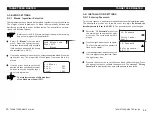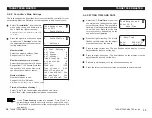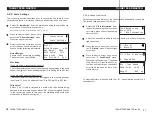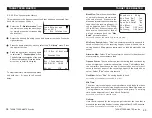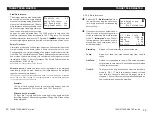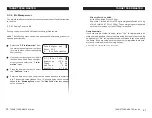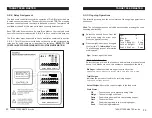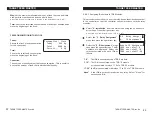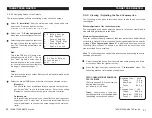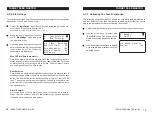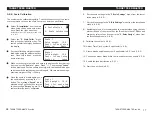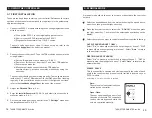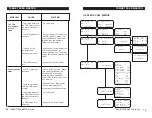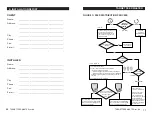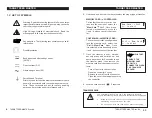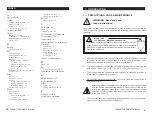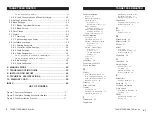
18
TARGET FEED MASTER
TARGET FEED MASTER rev.09
5.2 STARTING A NEW FLOCK
Starting a new flock allows clearing the previous flock's history. The fol-
lowing steps show how to post the initial age and number of birds and how
to enable the flock. Make sure the feed distribution is enabled in the se-
lected house before starting the new flock (s. 5.2.1).
1- Select the
"3.Start Flock"
menu of
the desired house then press the right-
arrow key. The initial age is displayed.
Use the adjustment buttons to set it
to the desired value.
2- Press the down-arrow key. The initial
number animals flashes on the display.
Use the adjustment buttons to set it
to the desired value.
3- Press the down-arrow key. The message
"Start Flock?"
flashes on
the display.
4- Press + to start the new flock. The posted answer "
Yes
" is displayed
for a 20 second delay then the displays returns to "
No
". The new flock
is now created. The previous history has been cleared.
If 2 houses are used, proceed the same way to start a new flock in the
other house.
All histories are cleared when a new flock starts, except for
the alarm log and bin histories.
It is recommended to check the scale's accuracy between
each flock.
4.3 House 1 Start
Start Age: 1
Birds Entered: 20
Start Flock ? No
47
TARGET FEED MASTER
TARGET FEED MASTER rev.09
Backup bins:
When a bin is empty, it may be replaced by a backup bin. The selected
backup bin keeps being used up until it is empty – even if the original bin is
being refilled. When the backup bin is empty, it switches to its own backup
bin; in other words, the system does not necessarily returns to the original
bin when a backup bin becomes empty, it switches to the backup bin's
backup bin. This allows a constant feed circulation in each bin.
Since the transition between backup bins is done in a circular matter, it is
highly recommended to create a loop between all bins. This avoids generat-
ing run time alarms when a bin is empty and has no backup bin. The follow-
ing graphic illustrates the situation:
BIN 1
BIN 2
BIN 3
BIN 1
BIN 2
BIN 3



